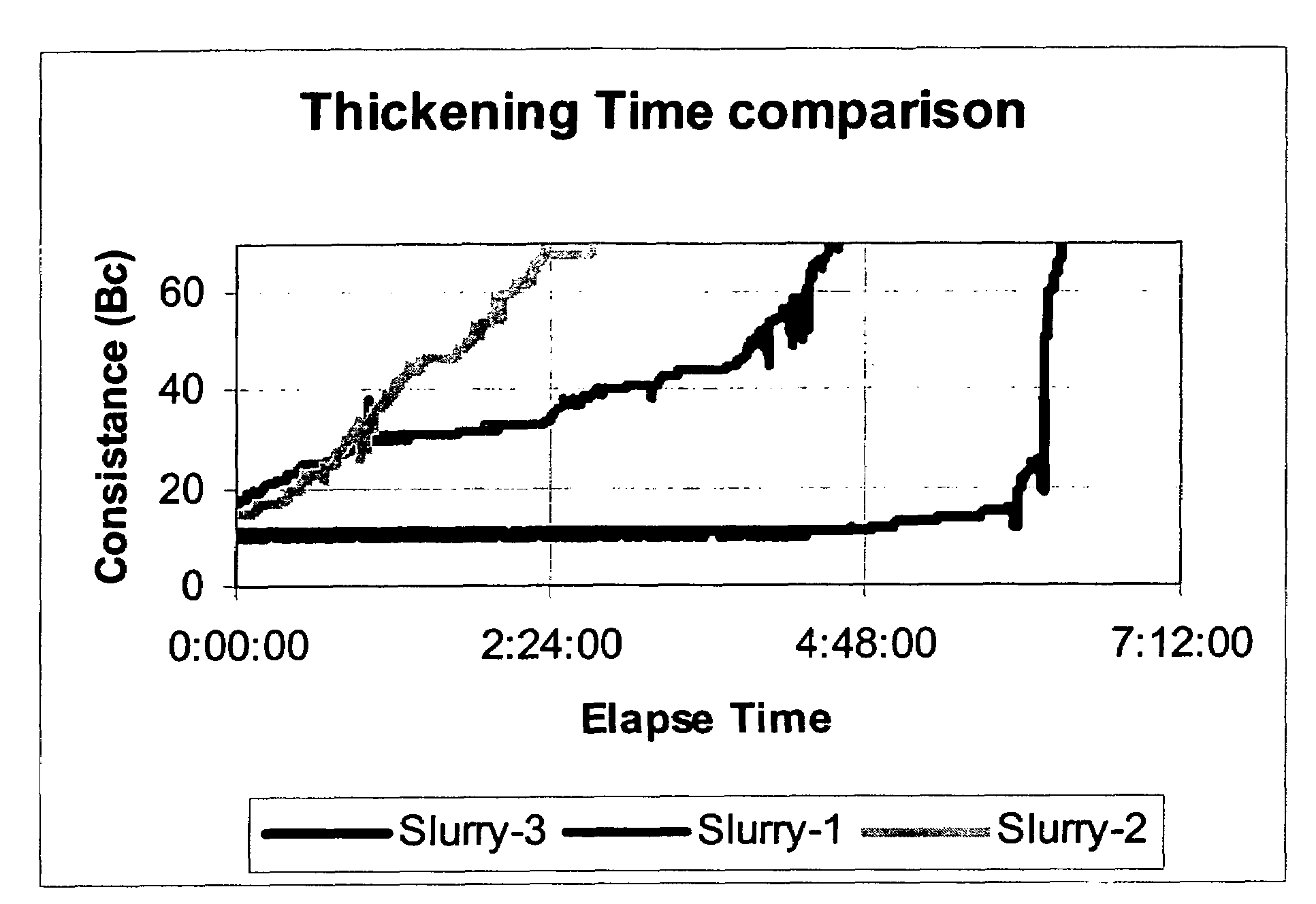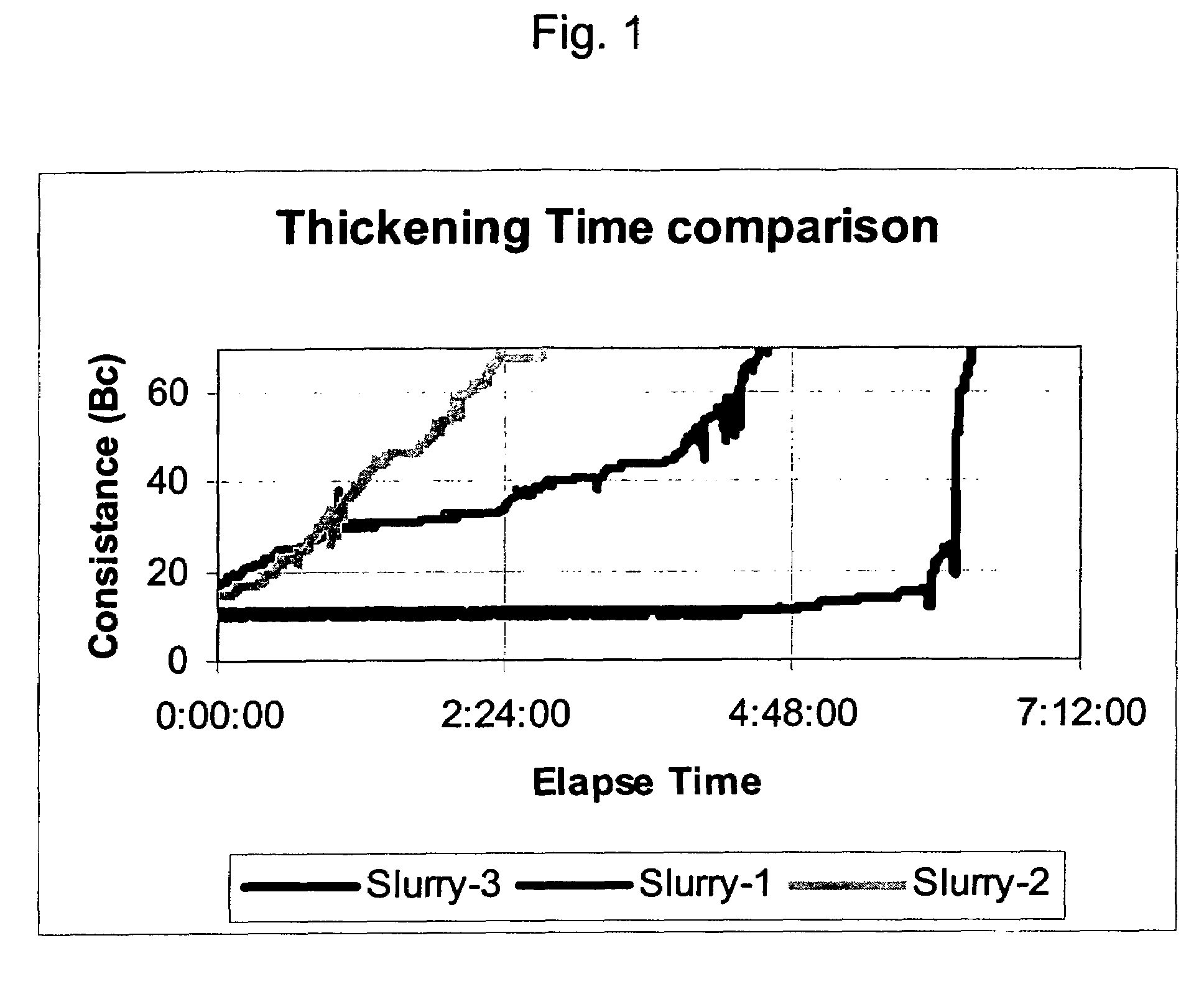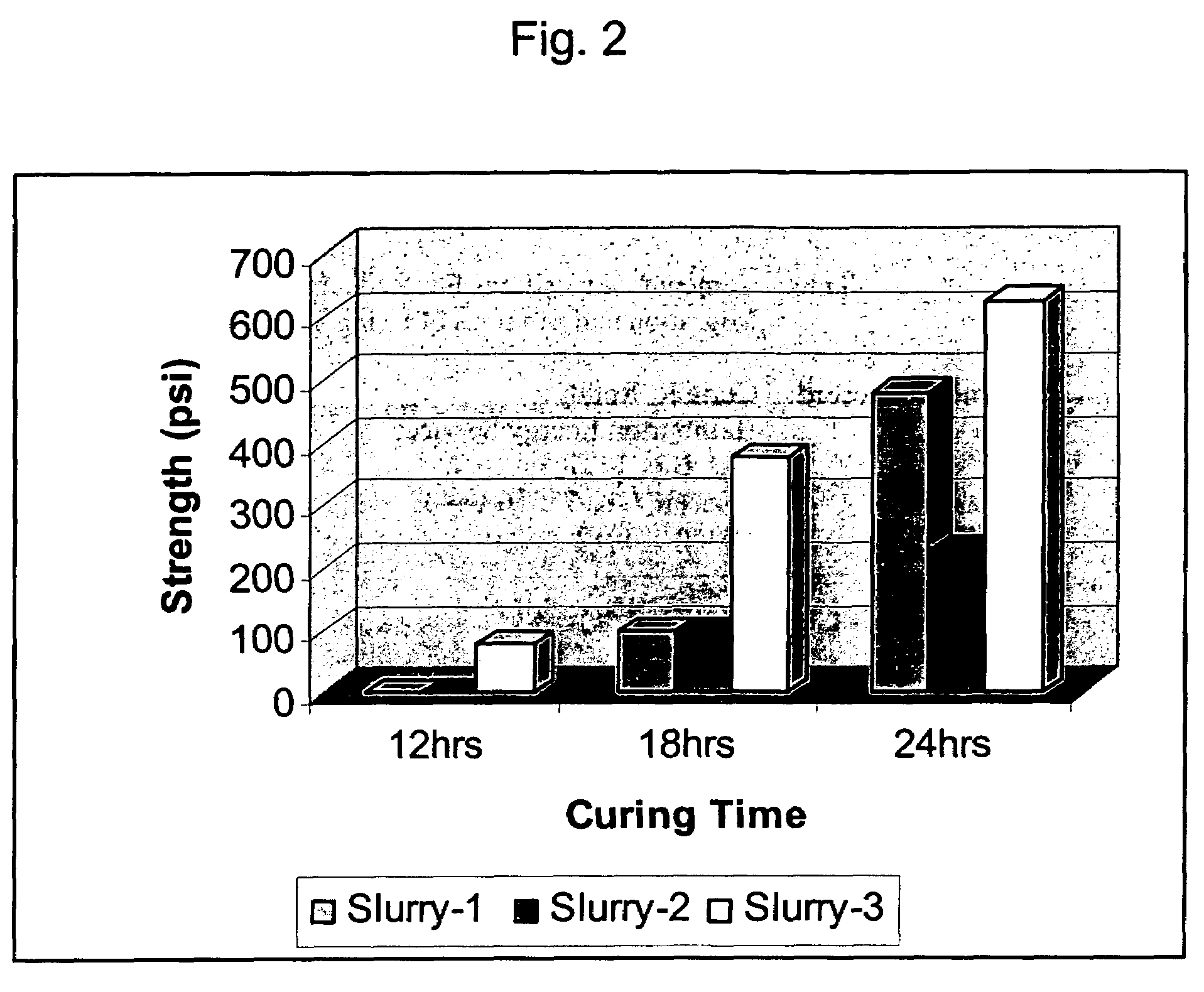Cement compositions for reducing gas or water migration and methods of using the same
a technology of cement composition and which is applied in the direction of sealing/packing, chemistry apparatus and processes, and wells/well accessories. it can solve the problems of unwanted gas or water migration, cement slurry losing its ability to transmit hydrostatic pressure, and cement residing in the annulus may be ineffective at maintaining the isolation of the adjacent subterranean formation
- Summary
- Abstract
- Description
- Claims
- Application Information
AI Technical Summary
Problems solved by technology
Method used
Image
Examples
example 1
[0047]The effect of the addition of a WSASP on the thickening time of three typical lightweight cement slurries (density=12 ppg) at 50° F. and atmospheric pressure were compared. The thickening time or the time required for each cement slurry to achieve 70 Bc was determined using a HPHT Consistometer while continuously shearing the composition according to API Recommended Practices 10B, Twenty-Second Edition, December 1997. At about 70 Bc the slurry undergoes a conversion from a pumpable fluid state to a non-pumpable paste. The composition of these Slurries 1-3 is given in Tables 1-3.
[0048]
TABLE 1Slurry 1Sea Water57.4%bwocCement Class G100%MICRO MATRIX hydraulic cement20%bwocHGS3000 glass bubbles12%bwocCFR-3L cement dispersant0.75gal / skHALAD 344 EXP low water loss additive0.20gal / skDAIR 300L antifoaming agent0.025gal / skDensity = 12 ppg
[0049]
TABLE 2Slurry 2Sea Water61%bwocCement Class G100%MICRO MATRIX hydraulic cement20%bwocHGS3000 glass bubbles12%bwocCFR-3L cement dispersant0.75gal...
example 2
[0052]The compressive strength, transition time and ZGT of Slurries 1-3 in Example 1 were determined and compared. The transition time and ZGT of each cement composition were determined according to the following procedure using a “MINIMACS” Instrument at 300° F. and 10,000 psi.
[0053]The MINIMACS Analyzer measures the shear resistance of a cement slurry under downhole temperature and pressure while the cement remains essentially static. The test is conducted by mixing the slurry and placing it into the MINIMACS Analyzer. The slurry is then stirred and heated to a bottom hole circulating temperature (BHCT) and downhole pressure according to the same schedule as the thickening time test. After the slurry reaches the BHCT, stirring is stopped and the slurry is allowed to essentially remain static. The stirring paddle is rotated at a rate of about 0.5° / min while the shear resistance on the paddle is measured. The shear resistance is correlated to the SGS (units are lb / 100 ft2) and a plo...
PUM
| Property | Measurement | Unit |
|---|---|---|
| temperature | aaaaa | aaaaa |
| temperature | aaaaa | aaaaa |
| temperatures | aaaaa | aaaaa |
Abstract
Description
Claims
Application Information
 Login to View More
Login to View More - R&D
- Intellectual Property
- Life Sciences
- Materials
- Tech Scout
- Unparalleled Data Quality
- Higher Quality Content
- 60% Fewer Hallucinations
Browse by: Latest US Patents, China's latest patents, Technical Efficacy Thesaurus, Application Domain, Technology Topic, Popular Technical Reports.
© 2025 PatSnap. All rights reserved.Legal|Privacy policy|Modern Slavery Act Transparency Statement|Sitemap|About US| Contact US: help@patsnap.com



